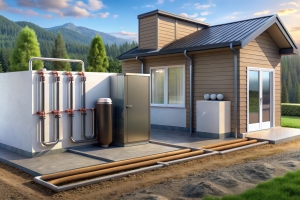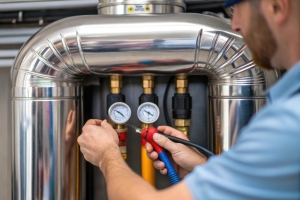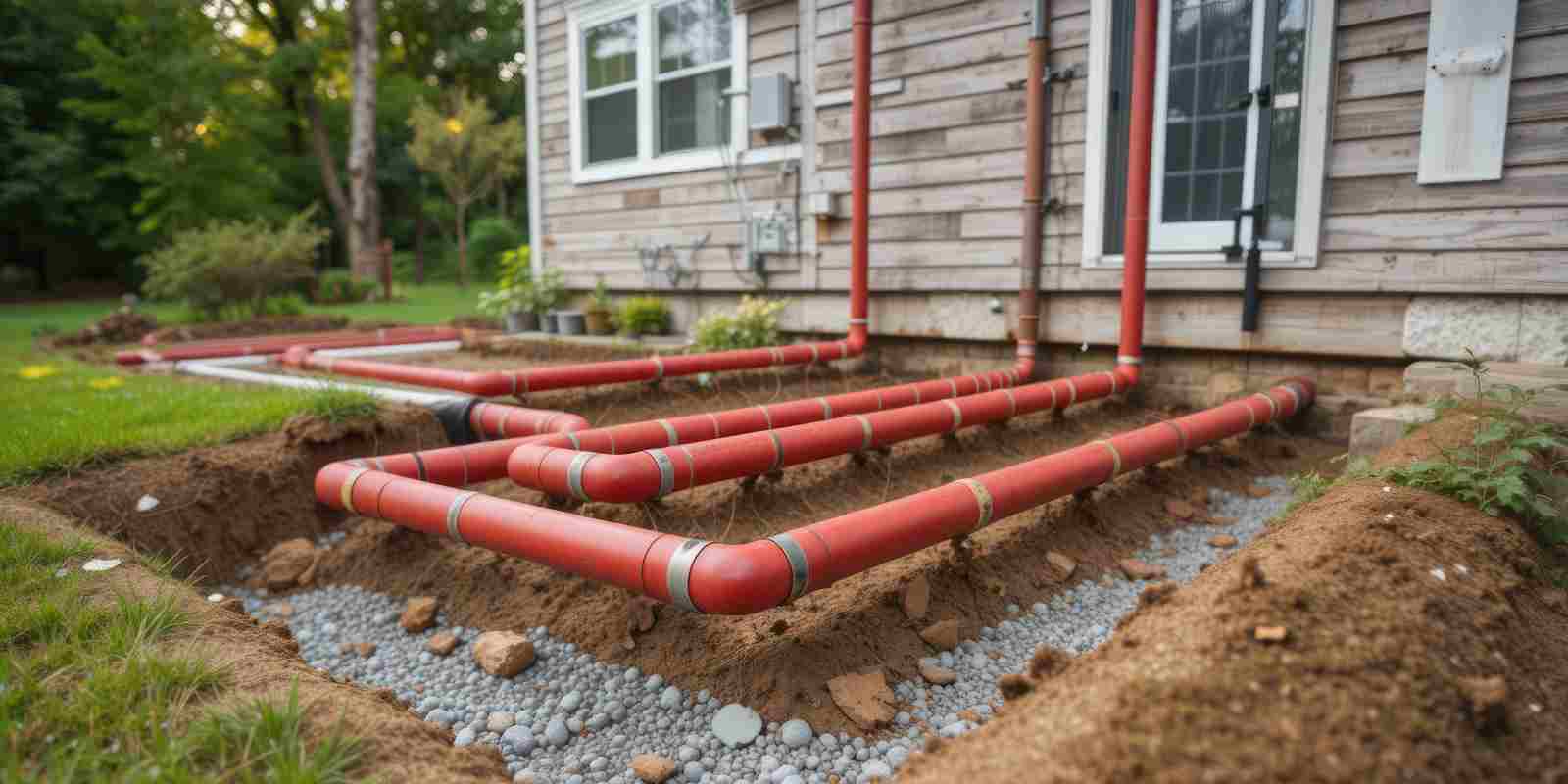
When winter sets in, every homeowner and business wants a heating system that delivers comfort without draining the budget. Geothermal heat pumps are gaining attention as an efficient, long-term alternative to furnaces and boilers that rely on fuel or outdoor air. But how different are they in practice?
When comparing costs, upkeep, and overall lifespan, the biggest distinctions come down to how each system generates and distributes heat. Once you understand and compare these distinctions, it becomes clearer why geothermal systems stand out in some cases while traditional options are better suited for others.
How Each System Creates & Moves Heat
Geothermal heat pumps utilize the steady temperature underground to transfer heat rather than generate it. A few feet below the surface, the soil stays between roughly 40 and 70 degrees year-round, providing a consistent source for heating and cooling.
A closed loop of buried pipes carries a mix of water and antifreeze, drawing heat from the earth in winter and releasing it back underground to cool the home in summer. That steady temperature difference keeps the equipment working efficiently and quietly through all seasons.
Traditional heating systems generate heat directly. Gas and oil furnaces or boilers burn fuel to produce warmth, while electric baseboards use resistance heating. Air-source heat pumps pull warmth directly from the surrounding air, but as temperatures drop, they must work harder to maintain comfort indoors.
Each method relies on different energy inputs and environmental conditions, which ultimately affect efficiency, comfort, and long-term operating costs.
Comparing Efficiency & Performance

Every system’s efficiency is measured differently. The heating efficiency of geothermal equipment is measured by the Coefficient of Performance (COP), while cooling performance is determined using the Energy Efficiency Ratio (EER).
ENERGY STAR standards specify a minimum COP of 3.6 and an EER of 17.1 for closed-loop water-to-air units, whereas many systems in practice operate with a COP of around 3.5 to 4.0.
Gas furnaces and boilers use Annual Fuel Utilization Efficiency (AFUE) ratings. The Department of Energy will require new residential gas furnaces to meet a minimum AFUE of 95% starting in 2028.
| System Type | Heating Efficiency | Cooling Efficiency | Typical / Minimum Rating |
| Geothermal Heat Pump | COP: 3.5–4.0 (ENERGY STAR min. 3.6) | EER: 17.1+ | High efficiency year-round; uses underground heat exchange. |
| Gas Furnace / Boiler | AFUE: 95% (2028 DOE standard) | — | Converts 95% of fuel into heat output. |
| Air-Source Heat Pump | HSPF2: 9 ≈ COP 2.6 | SEER: varies by model | Dual-purpose system for heating & cooling. |
| Electric Resistance | COP: 1.0 | — | 100% of electricity becomes heat (no efficiency gain). |
When comparing systems under typical conditions, geothermal heat pumps deliver roughly three to four times as much heating energy per unit of electricity as electric resistance systems.
Even against high-efficiency gas furnaces, the geothermal system’s ability to move existing heat rather than produce it directly results in lower energy use per delivered unit of heat.
Comfort, Noise, & Year-Round Benefits
Geothermal heat pumps maintain stable indoor temperatures without the wide swings common in on-off furnace cycles.
Since they draw from steady ground temperatures, they avoid the performance drop typical of air-source systems in extreme cold. The absence of an outdoor condenser also removes the hum and vibration that can accompany exterior HVAC units.
Many geothermal systems include a desuperheater, a small heat exchanger that captures waste heat for domestic hot water. During summer operation, this process can provide a significant share of a household’s hot water at little or no additional cost, improving total system value.
Installation, Longevity, & Maintenance

The success of a geothermal project depends on proper loop design. Options include vertical boreholes drilled 50 to 600 feet deep, horizontal trenches that require more land area, or submerged loops in ponds or lakes when available.
Closed-loop systems circulate a sealed fluid mix, while open-loop systems use groundwater directly and return it to a recharge well or permitted discharge point.
Buried loops have long lifespans, often exceeding 50 years, with indoor components lasting around 20 to 25 years. Maintenance involves basic filter replacements, pump checks, and fluid testing, comparable to standard heat pump service.
With no outdoor unit exposed to weather, maintenance needs for these systems are generally lower over time.
The Bottom Line On Smarter, Cleaner Heating
Geothermal heat pumps and traditional heating systems each have their place, but the primary difference is in how efficiently they turn energy into comfort. For homeowners and property managers planning ahead, geothermal can be a smart investment that delivers year-round comfort, reduced energy use, and long-term value.
At A. Borrelli Mechanical, we’ve spent more than four decades helping Westchester County families and businesses find the right heating solutions for their space, budget, and goals. If you’re interested in comparing geothermal options to your current setup, we can help you understand what fits best for your home or property.
Call us today at (914) 809-9070 or use our online contact form to schedule a consultation and discover how we can make your heating system more efficient, comfortable, and reliable for years to come.



